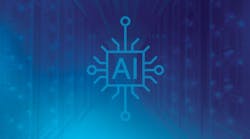Meta’s $27B Hyperion Campus: A New Blueprint for AI Infrastructure Finance
Key Highlights
- The Hyperion project is a $27 billion AI megacampus in Louisiana, with Blue Owl owning 80% and Meta 20%, highlighting a new private-capital financing model.
- Construction is underway with thousands of workers, focusing on local hiring and community investment, and aims for 2 GW of energy capacity by 2030, expanding to 5 GW.
- The project incorporates long-lived power and cooling infrastructure, with energy plans including natural gas, solar, and future clean energy sources, amid regulatory and public scrutiny.
- Hyperion exemplifies Meta’s shift toward integrated AI factories, combining compute density, power infrastructure, and innovative financing to support AI demand growth.
- The venture could serve as a blueprint for future hyperscale campuses, balancing near-term reliability with long-term decarbonization goals amid policy and market uncertainties.
At the end of October, Meta announced a joint venture with funds managed by Blue Owl Capital to finance, develop, and operate the previously announced “Hyperion” project, a multi-building AI megacampus in Richland Parish, Louisiana. Under the new JV structure, Blue Owl will own 80 percent and Meta 20 percent, though Meta had announced the project long before Blue Owl’s involvement was confirmed.
The venture anticipates roughly $27 billion in total development costs for the buildings and the long-lived power, cooling, and connectivity infrastructure. Blue Owl contributed about $7 billion in cash at formation; Meta received a $3 billion one-time distribution and contributed land and construction-in-progress to the vehicle. Rachel Peterson, VP of Data Centers at Meta, noted that construction on the project is already well underway, with thousands of workers on-site.
Structuring Capital and Control
Media coverage from Reuters and others characterizes the financing package as one of the largest private-capital deals ever for a single industrial campus, with debt placements led by PIMCO and additional institutional investors. Meta keeps the project largely off its balance sheet through the joint venture while retaining the development and property-management role and serving as the anchor tenant for the campus.
The JV allows Meta to smooth its capital expenditures and manage risk while maintaining execution control over its most ambitious AI site to date. The structure incorporates lease agreements and a residual-value guarantee, according to Kirkland & Ellis (Blue Owl’s counsel), enabling lenders and equity holders to underwrite a very large, long-duration asset with multiple exit paths. For Blue Owl, Hyperion represents a utility-like digital-infrastructure platform with contracted cash flows to a single A-tier counterparty: a hyperscaler running mission-critical AI workloads for training and inference.
As Barron’s and MarketWatch have noted, the deal underscores Wall Street’s ongoing appetite for AI-infrastructure investments at unprecedented ticket sizes, even amid some cooling in data-center valuations.
Campus Rollout and Energy Infrastructure at a Glance
The campus is being constructed in the northeastern Louisiana parish of Richland Parish. The core build is described by Meta Platforms as a ~4 million sq ft facility — the company’s largest to date — with general contractors including Mortenson Construction, Turner Construction Company and DPR Construction. At peak construction, the workforce could exceed 5,000; the build is being delivered in phases. Meta is emphasizing local hiring and community investment via its Richland site hub.
Energy demand for the campus is among the most critical variables. Public commentary by Meta and regulators points to an initial target of about 2 GW of capacity by 2030, with potential expansion toward 5 GW as the AI footprint grows.
To meet those future demands, utility Entergy Louisiana secured regulatory approval for major infrastructure, including three new natural-gas combined-cycle units (two in Richland Parish, one at Waterford) scheduled for late-2028/2029, transmission upgrades and a fast-tracked solar deployment of up to 1,500 MW, explicitly to support Meta’s campus and broader load growth. Regulators and press accounts highlight the scale and speed of the approvals — and the public push-back around costs, transparency and the balance of gas versus clean power.
While Meta has communicated broad clean-energy ambitions across its global footprint, independent analysts note that for the initial phases of the site, the project is likely to rely heavily on natural gas generation, with renewables, nuclear and other firm resources overlaid only as the project matures. This mirrors the lessons from Meta’s “Prometheus” (Ohio) program, whose design approach is informing this Louisiana build — where clean energy targets are running up against real-world transmission and interconnection constraints.
The JV structure deliberately embeds “long-lived power & cooling infrastructure” into the ~US$27 billion development budget, recognising that energy assets and off-site PPAs are inseparable from the campus economics. Under the Entergy plan, rate-base investments and contracted off-take reduce delivery risk, but the project remains exposed to commodity, regulatory and public-acceptance dynamics.
Strategic Implications: Meta’s Long-Term AI Infrastructure Play
Hyperion forms a cornerstone of Meta’s expanding multi-gigawatt AI estate, joining the Prometheus campus in Ohio as part of its next-generation data infrastructure. The company has outlined multi-year AI capital expenditures running into tens of billions, while industry analysts now frame total U.S. digital-infrastructure investment requirements in the hundreds of billions annually. Within that context, Hyperion stands as the emblem of Meta’s transformation from traditional data centers to fully integrated “AI factories,” i.e. facilities where compute density, power infrastructure, and financing models are engineered together from the ground up.
If the Hyperion joint-venture structure performs as underwritten and prices efficiently in private-credit and infrastructure-equity markets, it could become a repeatable financing blueprint for hyperscale expansion. Similar “copy-and-paste” models could surface in regions where hyperscalers must rapidly secure new generation capacity or major grid upgrades on compressed timelines.
The accelerated Entergy approval process provides Meta with valuable near-term headroom — effectively buying time and capacity while the company works toward layering in long-duration clean-energy contracts. Over time, those could include nuclear uprates, SMR or microreactor pilots, geothermal resources, and firmed-solar blocks as permitting and market frameworks evolve.
Yet execution risks remain. Public opposition and regulatory scrutiny around Entergy’s gas-plant buildout, transmission costs, and transparency continue to pose potential hurdles. Any policy shifts or litigation could affect project schedules or cost recovery. Hyperion’s energy-development strategy, therefore, remains a critical test case for balancing near-term reliability with long-term decarbonization in the AI era.
The Bottom Line: A New Archetype for AI Megacampus Financing
The Meta–Blue Owl Hyperion joint venture represents a defining evolution in hyperscale infrastructure finance — a balance-sheet-light model for the hyperscaler, an infrastructure-style yield vehicle for investors, and an integrated framework where energy, cooling, and connectivity are treated as first-class project scope. It also places the political-economy challenges of large-scale power development squarely at the center of AI-era site planning.
Commenting on the ability to deliver capital at unprecedented scale, Doug Ostrover and Marc Lipschultz, Co-CEOs of Blue Owl Capital, said:
We're proud that our funds are partnering with Meta on the development of the Hyperion data center campus—an ambitious project that reflects the scale and speed required to power the next generation of AI infrastructure. Blue Owl's ability to deliver substantial capital at scale, combined with our deep experience supporting hyperscalers, makes us uniquely positioned to help bring mission-critical digital infrastructure to life. We look forward to continuing our work with Meta and contributing to the long-term growth of the Richland Parish community.
If the Hyperion venture performs as underwritten—particularly in delivering 2 GW of capacity by 2030 and a credible runway toward 5 GW—the project could become the canonical case study for how “power-first” AI campuses are built in the United States. It remains, however, an inherently forward-looking bet: one that assumes continued acceleration in AI demand and enduring investor appetite for long-duration digital-infrastructure assets.
For now, visibility into AI workloads and GPU-driven expansion remains strong, and the JV’s residual-value guarantees and lease structures help reassure lenders if growth moderates. Yet the sheer scale of Hyperion cuts both ways—its power requirements and embedded capital commitments make any future repositioning, should demand falter, a daunting and costly prospect in itself.
Blue Owl’s Expanding Footprint Signals Wall Street’s Deeper Dive Into Digital Infrastructure
Beyond Hyperion, Blue Owl has quietly become one of Wall Street’s most active players in digital infrastructure. The firm has backed hyperscale and edge operators through vehicles such as its Oak Tree and Owl Rock infrastructure funds, taken positions in colocation platforms across North America and Europe, and financed data-center portfolios through partnerships with operators including Compass Datacenters, Aligned Data Centers, and Vantage. These investments share a common thread: long-duration, contracted cash flows tied to mission-critical digital assets.
Its partnership with Meta therefore represents the next logical step: a move upstream into the physical build layer of AI-era infrastructure. For the broader market, it signals how private-credit and infrastructure-equity capital are converging around hyperscale demand, reshaping how the next generation of power-intensive campuses will be financed and delivered. If Hyperion performs to plan, it won’t just stand as Meta’s largest build; it will mark Blue Owl’s arrival as a long-term co-architect of the AI infrastructure economy.
At Data Center Frontier, we talk the industry talk and walk the industry walk. In that spirit, DCF Staff members may occasionally use AI tools to assist with content. Elements of this article were created with help from OpenAI's GPT5.
Keep pace with the fast-moving world of data centers and cloud computing by connecting with Data Center Frontier on LinkedIn, following us on X/Twitter and Facebook, as well as on BlueSky, and signing up for our weekly newsletters using the form below.
About the Author



